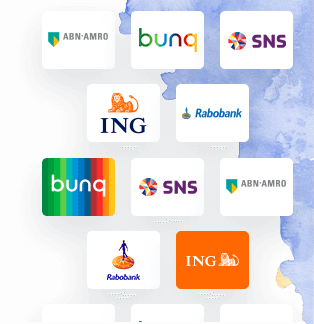
First, why is the ability to write an email properly so important? If you want to study at a top university in The Netherlands, you need to effectively communicate in any professional setting. Regardless if you study in the best universities in the Netherlands or not, professionalism will help you succeed. Whether you are applying for a job, a course or to ask a favour, you are far more likely to succeed if the tone is correct and the content is appropriate.
The general structure of any email is:
- Greeting / salutation;
- Subject / reason;
- Request / statement / answer;
- Summary (if necessary); and
- End.
This is a general structure, some sections may not be relevant and some sections may be larger than others. This all comes down to the context and purpose of the email.
While studying in The Netherlands, a general point of advice for any professional correspondence is the clarity of your email. Chances are you will be writing to someone who may not be a native English speaker or who has limited time or speaks English a different way (i.e. the United Kingdom English v American English). Different professional and cultural background come into play as well, but for now, we will keep it general.
Step one. The greeting or salutation.
Here you can choose to be specific or general. If you are addressing a specific person, you would normally choose to start the email with Sir or Ma'am. The general rule here is, if the person is your potential employer, professor or alike until they advise you they prefer another way to address them (normally a first name basis), then the formality continues. Another important element to be aware of is if the recipient identifies as another pronoun. If in doubt about this, the safe bet is to use their title and last name, i.e. doctor or professor.
The general greeting or salutation would be used for correspondence to a group address or an office, such as the enrolment or international office. Essentially you are unsure who will receive the email. Here a general formal salutation can be applicable. For example, ‘Good day, Sir, Ma'am, et al’ or ‘Good day Sir and / or Madam’. The use of 'et al' is a neutral meaning of 'and others'. This approach pretty much covers everything. Always remember to use the correct part of the day in your greeting.
Step two. The subject / reason
It is in the subject line, but this section gives you a chance to clarify the purpose of the email. For example, ‘I am writing to you to request an academic reference letter’. If you are responding to the recipient’s email, you can refer to their last email, i.e., 'regarding your last email'. Then you can state the reason for your email. This step is not always necessary and can be short when you are clarifying the content of the recipient’s last email i.e. 'you stated this in your last email, I am writing to request further clarification'.
Step three. The request, statement or answer
Here is the section where you either ask for something, make a statement or provide an answer. This is where many people write the reason for their request and clarify the request's importance or urgency. For example, 'the reason I am asking for a recommendation letter is because I am applying for a masters in science at Leiden University and applications are due 01 June’. You can present this information earlier on in the email in the reason section. If you are presenting an answer, it is unlikely your email will consist of each of these sections in a lengthy manner. If it is applicable, the answer naturally flows after the reason or clarification of the email. This part is important as it allows you to clarify what you thought you were asked and allows the recipient a chance to understand why you are providing this answer. This prevents a misunderstanding, something which happens far too often.
Step four. Summary
In this section, you can provide a summary of your email and what you anticipate the next step is. This section can be disregarded if the email is a short response but allows you the chance to provide any additional clarification. For example, ‘please find attached my transcripts to assist you with the enquiry, if you have any problems accessing them, please let me know’.
Step five. End
This is the final section but it is as an important one. It is your last chance to be respectful and finish that email in the best way possible, the "icing on the cake," essentially. It is important to pick an appropriate sign off, such as; "regards, thank you for your time or I look forward to your response." These are not overly formal but are applicable for almost any situation while in University. Try to keep this section short and treat it as if you are speaking to the recipient, if it's not appropriate in person, it is certainly not appropriate over email. A final tip for this section, have a signature block, or a consistent way your name is present at the bottom of the email, and if you want to help the recipient with helping you or to get in contact with you, your student number and other ways they can contact you will help.
Writing an email is an important way to present yourself and to make a good impression. Keep in mind the tone, and always proofread them. Keep in mind the email may be meant for a lecturer, professor, mentor or future employer but it may be read by a second person. So make sure that tone is appropriate. One final tip for drafting emails, the last thing you should do is add the recipient’s address. This prevents accidentally sending a half-written email, or one missing the important document you were meant to submit with the email.
We wish you the best of luck in making your best impression.

























